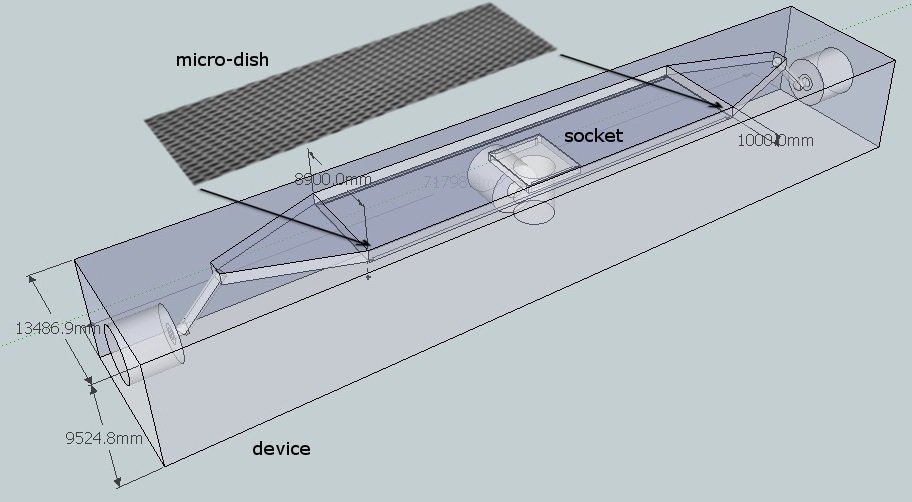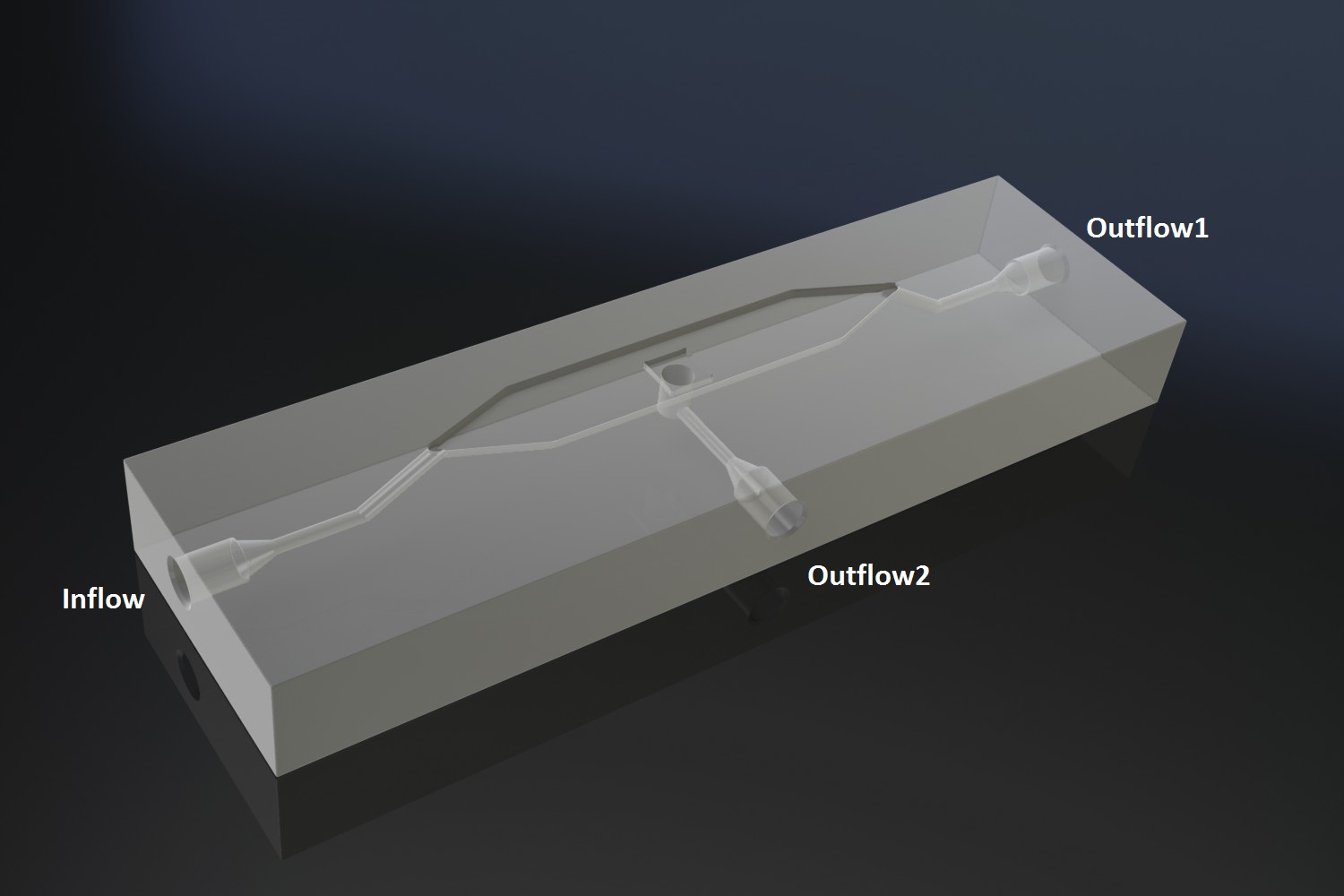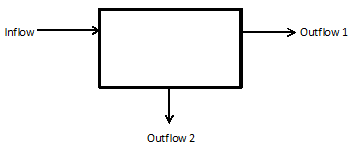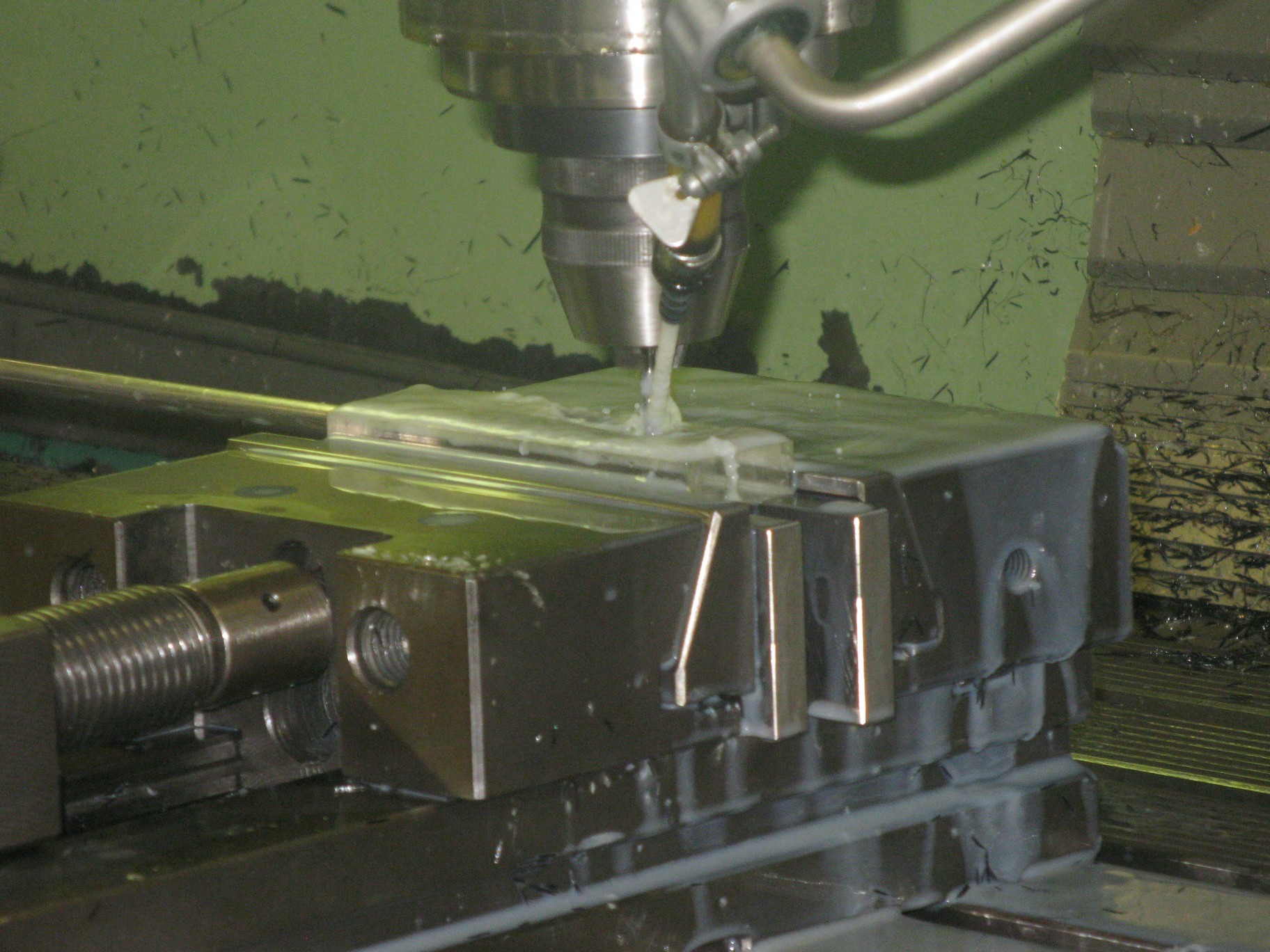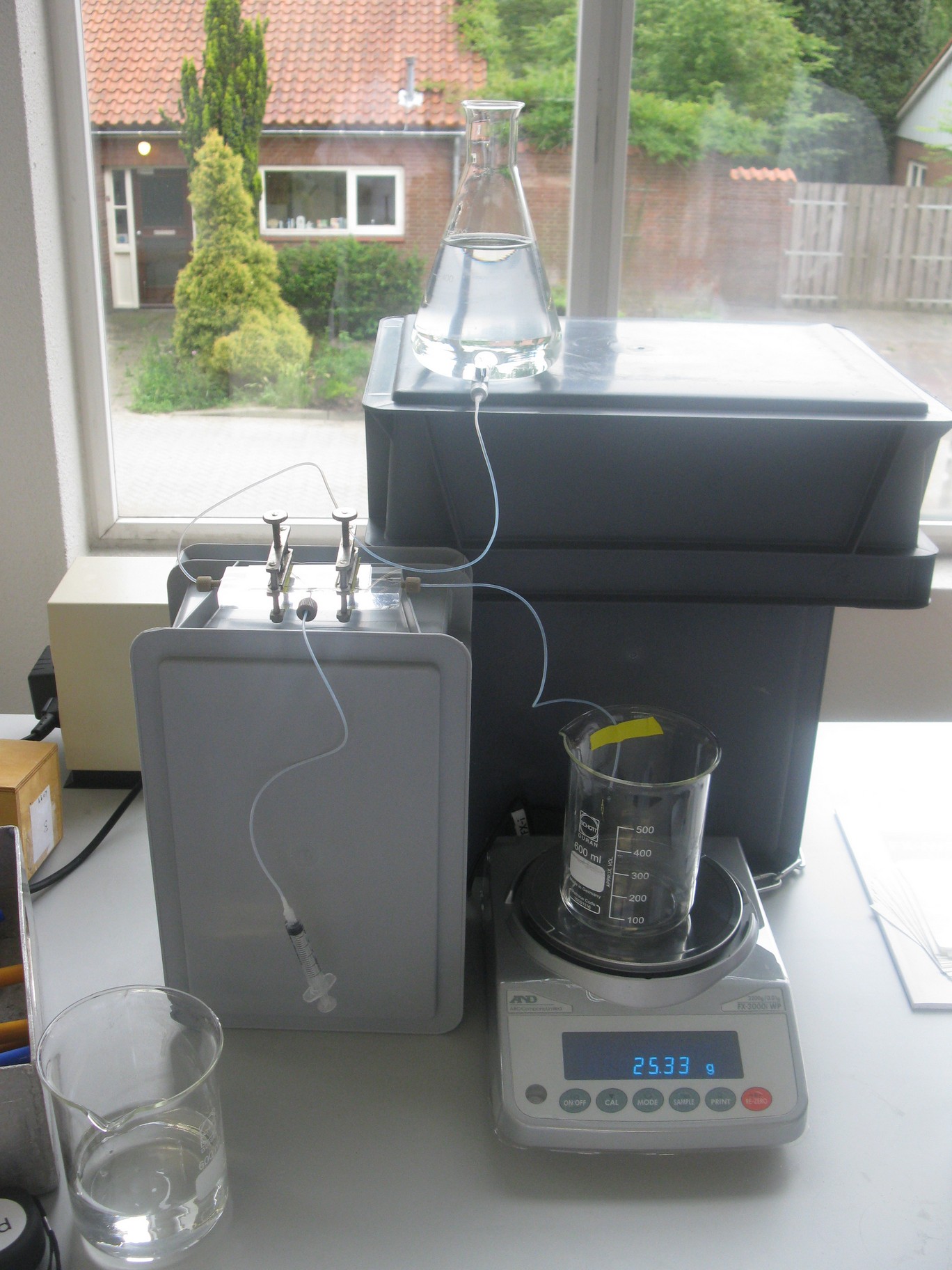Team:Wageningen UR/Project/Devices
From 2011.igem.org
(→Fluid device designed by Team Wageningen UR to measure oscillations) |
(→Fluid device designed by Team Wageningen UR to measure oscillations) |
||
| Line 53: | Line 53: | ||
==== 2. Setup ==== | ==== 2. Setup ==== | ||
| - | The main concern for the setup of the device was to be able to gain control over the flow rate. According to Bernoulli's principle, the velocity of a fluid can be influenced by varying the height of the medium bottle. This approach was also used in the paper cited above. Figure X. shows the corresponding setup and the applying equations | + | The main concern for the setup of the device was to be able to gain control over the flow rate. According to Bernoulli's principle, the velocity of a fluid can be influenced by varying the height of the medium bottle. This approach was also used in the paper cited above. Figure X. shows the corresponding setup and the applying equations. |
[[File:Scheme_setup1_WUR.png|500px|left]] [[File:Setup1_WUR.JPG|200px|right]] | [[File:Scheme_setup1_WUR.png|500px|left]] [[File:Setup1_WUR.JPG|200px|right]] | ||
| Line 62: | Line 62: | ||
'''Fig.X:''' ''Setup of the device using Bernoulli's principle to control the velocity of the fluid.'' | '''Fig.X:''' ''Setup of the device using Bernoulli's principle to control the velocity of the fluid.'' | ||
| - | However, as mentioned on the [[Team:Wageningen_UR/Project/ModelingProj1#3._Conclusions_for_our_system| modeling page]], the dimensions of our fluidic device did not allow the aimed for precise control over the flow rate. This was tested both by calculating some theoretical values applicable for our device and running pilot experiments with water. Furthermore the | + | However, as mentioned on the [[Team:Wageningen_UR/Project/ModelingProj1#3._Conclusions_for_our_system| modeling page]], the dimensions of our fluidic device did not allow the aimed for precise control over the flow rate. This was tested both by calculating some theoretical values applicable for our device and running pilot experiments with water. Furthermore the obtained flow rates were also much faster than the flow rates in which oscillations were to be expected. This was solved by expanding our setup to incorporate the use of a syringe pump which controls the inflow. Figure X+1 shows the new setup. |
| + | |||
| + | [[File:Scheme_setup2_WUR.png|450px|center]] | ||
| + | |||
| + | '''Fig.X:''' ''Setup of the device using Bernoulli's principle to control the velocity of the fluid.'' | ||
| Line 69: | Line 73: | ||
| - | + | ||
--> | --> | ||
Revision as of 18:49, 18 September 2011
 "
"



